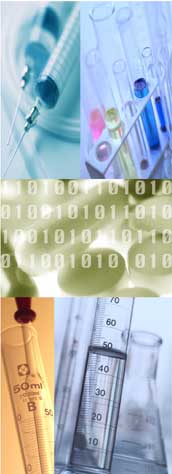

答え)
通常では起こらない、新たな治療を必要とする以下のような病気のことです。どれも、100人に一人程度、あるいは1000人に一人以下の頻度ですが、当センターでは、どれに対しても十分な予防策を行いますので、ご安心ください。
1.貧血
貧血が起こるとふらついてリハビリが進みませんし、他人の血液を輸血することとなります。これを避けるため、当センターでは手術前に"貯血"という、「自分の血液保存すること」を行います。さらに、手術中に出血しますが、これを特殊な機械を用いて体内に戻すことができます。ご自分の血液ですから、エイズ、肝炎、梅毒などに新たに感染する危険性がありません。そして、ふらつかずにリハビリを行うことができるわけです。
2.細菌感染
骨の中に金属を使用して行う手術ですから、細菌感染には十分注意しなければなりません。一度大きな感染がおこると、人工関節をすべて抜かなければならないこともあります。この感染予防のため、手術1日前から抗生物質の内服、点滴をしていただき、予防を行います。もしも、手術前に虫歯などがある方はしっかりと治療をしておいてください。
3.下肢深部静脈血栓症、肺塞栓症
最近新聞紙上でもよく話題になる「エコノミー症候群」と同じ病態です。たとえ一晩でもベッドの上でじっとして動かずにいると、血のかたまり(血栓)が、足の太い静脈の中にできることがあります。翌朝動き始めたときに足の中の血栓が肺に詰まったり、ももの付け根の静脈に詰まったりして足がはれたり、息が苦しくなったり、ひどいときには死に至ることもあります。当センターではこれらを予防するために、手術のときから足にフットポンプという空気圧迫機械をつけて手術後も同様に予防します。また、弾性ストッキングという、長い圧迫靴下を履いていただくこともあります。手術後6週間は薬による予防も行いますから、早期退院や、日帰り手術の方も十分に予防することができる体制になっています。
4.転倒、事故などによる骨折
非常にまれではありますが、不慮の事故として転倒したり、事故にあったりして人工関節周囲に骨折を起こすことがあります。これらに対しても、当センターでは十分な管理体制と、事故防止に努力しておりますのでご安心ください。
5.合併症発生率
日本整形外科学会が調査し、論文で述べられている人工股関節後の合併症は日本全体で約7%ですが、当センターでは過去の3000例以上を調査した結果、その1/3以下の1.8%となっています。
主な内訳でも、脱臼 0.4%、深部感染 0.3%、術中、術後の骨折 0.1%、術後神経障害 0.1%、新たな治療を必要とした静脈血栓、肺塞栓症 0%、その他 0.8%であり、MISという小さな傷で手術ができる治療法においても合併症は他施設と比較しても圧倒的に少ないことがわかっています。さらに詳しいことをお聞きになりたい方は、外来診察時にお問い合わせください。当センターでは、すべての医師が同じように質問にお答えいたします。
以上、手術に際しての怖いお話ばかりとなりましたが、これらも手術前に十分ご理解していただくことが重要です。ご質問がありましたら、遠慮なく医師、看護スタッフまでお申し付けください。


Complications after the surgery are diseases which do not regularly occur and require additional treatments. The rate of such complications is one in hundred or thousand. We take every possible precaution to prevent these complications.
1. Anemia
When the patient experiences anemia, proper rehabilitation can not be performed due to tottering and therefore the blood transfusion from others is necessary. To avoid this, we have a system called メBlood Donationモ which stores the patientユs own blood before the surgery. In addition, we have a special device to return the patientユs blood which is lost during the surgery to the patientユs body. The transfusion of the patientユs own blood contains no risk for AIDS, hepatitis, or syphilis. In this way, the patient is able to continue rehabilitation without tottering.
2. Microbism (infection by bacteria)
Great care is taken to prevent infection by bacteria during the surgery, considering that the metal is implanted to the patientユs bone. When the large degree of infection occurs, it is sometimes necessary to remove the whole artificial joints. To prevent such infection, the patient takes antibiotics and drip starting from one day before the surgery. Any dental caries should be treated before the surgery.
3. Pulmonary embolism or deep vein thrombosis in the lower limbs
These are the same as Economy-Class Syndrome which you may have read about in the newspaper. Even if lying on the bed, no movement for long periods of time could form a blood clot (thrombus) in the major veins of the leg. When starting moving on the following morning, the clot in the vein of the leg travels to the lung and gets blocked to cause a breathing difficulty. It also could be blocked in the vein at the groin causing a swelling of the leg or the worst case could cause a death. In our institution, we use a device called foot pump to adjust air pressure during and after the surgery. Sometimes, we instruct the patient to wear TED stocking which is the compressed stocking. For 6 months after the surgery, the patient is expected to take internal medicine so that the patient who left the hospital after the short stay including the day-surgery can also prevent embolism.
4. Falling down or Fracture due to accidents
Although it is rare to happen, some patients experience fracture in or surrounding the hip joint due to unexpected falling down or accidents. Our institution offers the sufficient management system to those patients and makes every possible effort to prevent such unexpected accidents.
The complications mentioned above are not the most exciting subjects to know before the surgery. However, it is important for the patient to understand these complications. Please ask the surgeon or he nurse if any questions regarding these complications.